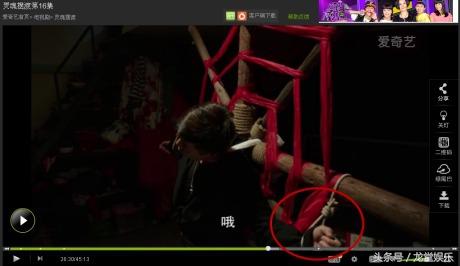C 类型转换类型转换(cast)是将一种数据类型转换成另一种数据类型例如,如果将一个整型值赋给一个浮点类型的变量,编译器会暗地里将其转换成浮点类型,我来为大家科普一下关于c语言实现面向对象设计?以下内容希望对你有帮助!

c语言实现面向对象设计
C 类型转换
类型转换(cast)是将一种数据类型转换成另一种数据类型。例如,如果将一个整型值赋给一个浮点类型的变量,编译器会暗地里将其转换成浮点类型。
转换是非常有用的,但是它也会带来一些问题,比如在转换指针时,我们很可能将其转换成一个比它更大的类型,但这可能会破坏其他的数据。
应该小心类型转换,因为转换也就相当于对编译器说:忘记类型检查,把它看做其他的类型。
一般情况下,尽量少的去使用类型转换,除非用来解决非常特殊的问题。
无论什么原因,任何一个程序如果使用很多类型转换都值得怀疑.
标准c 提供了一个显示的转换的语法,来替代旧的C风格的类型转换。
使用C风格的强制转换可以把想要的任何东西转换成我们需要的类型。那为什么还需要一个新的C 类型的强制转换呢?
新类型的强制转换可以提供更好的控制强制转换过程,允许控制各种不同种类的强制转换。C 风格的强制转换其他的好处是,它们能更清晰的表明它们要干什么。程序员只要扫一眼这样的代码,就能立即知道一个强制转换的目的。
1 静态转换(static_cast)
用于类层次结构中基类(父类)和派生类(子类)之间指针或引用的转换。
进行上行转换(把派生类的指针或引用转换成基类表示)是安全的;
进行下行转换(把基类指针或引用转换成派生类表示)时,由于没有动态类型检查,所以是不安全的。
用于基本数据类型之间的转换,如把int转换成char,把char转换成int。这种转换的安全性也要开发人员来保证。
class Animal{}; class Dog : public Animal{}; class Other{}; //基础数据类型转换 void test01(){ char a = 'a'; double b = static_cast<double>(a); } //继承关系指针互相转换 void test02(){ //继承关系指针转换 Animal* animal01 = NULL; Dog* dog01 = NULL; //子类指针转成父类指针,安全 Animal* animal02 = static_cast<Animal*>(dog01); //父类指针转成子类指针,不安全 Dog* dog02 = static_cast<Dog*>(animal01); } //继承关系引用相互转换 void test03(){ Animal ani_ref; Dog dog_ref; //继承关系指针转换 Animal& animal01 = ani_ref; Dog& dog01 = dog_ref; //子类指针转成父类指针,安全 Animal& animal02 = static_cast<Animal&>(dog01); //父类指针转成子类指针,不安全 Dog& dog02 = static_cast<Dog&>(animal01); } //无继承关系指针转换 void test04(){ Animal* animal01 = NULL; Other* other01 = NULL; //转换失败 //Animal* animal02 = static_cast<Animal*>(other01); }
动态转换(dynamic_cast)
dynamic_cast主要用于类层次间的上行转换和下行转换;
在类层次间进行上行转换时,dynamic_cast和static_cast的效果是一样的;在进行下行转换时,dynamic_cast具有类型检查的功能,比static_cast更安全;
class Animal { public: virtual void ShowName() = 0; }; class Dog : public Animal{ virtual void ShowName(){ cout << "I am a dog!" << endl; } }; class Other { public: void PrintSomething(){ cout << "我是其他类!" << endl; } }; //普通类型转换 void test01(){ //不支持基础数据类型 int a = 10; //double a = dynamic_cast<double>(a); } //继承关系指针 void test02(){ Animal* animal01 = NULL; Dog* dog01 = new Dog; //子类指针转换成父类指针 可以 Animal* animal02 = dynamic_cast<Animal*>(dog01); animal02->ShowName(); //父类指针转换成子类指针 不可以 //Dog* dog02 = dynamic_cast<Dog*>(animal01); } //继承关系引用 void test03(){ Dog dog_ref; Dog& dog01 = dog_ref; //子类引用转换成父类引用 可以 Animal& animal02 = dynamic_cast<Animal&>(dog01); animal02.ShowName(); } //无继承关系指针转换 void test04(){ Animal* animal01 = NULL; Other* other = NULL; //不可以 //Animal* animal02 = dynamic_cast<Animal*>(other); }
3 常量转换(const_cast)
该运算符用来修改类型的const属性。。
常量指针被转化成非常量指针,并且仍然指向原来的对象;
常量引用被转换成非常量引用,并且仍然指向原来的对象;
注意:不能直接对非指针和非引用的变量使用const_cast操作符去直接移除它的const.
//常量指针转换成非常量指针 void test01(){ const int* p = NULL; int* np = const_cast<int*>(p); int* pp = NULL; const int* npp = const_cast<const int*>(pp); const int a = 10; //不能对非指针或非引用进行转换 //int b = const_cast<int>(a); } //常量引用转换成非常量引用 void test02(){ int num = 10; int & refNum = num; const int& refNum2 = const_cast<const int&>(refNum); }
4 重新解释转换(reinterpret_cast)
这是最不安全的一种转换机制,最有可能出问题。
主要用于将一种数据类型从一种类型转换为另一种类型。它可以将一个指针转换成一个整数,也可以将一个整数转换成一个指针
最后,如果你想学C/C 可以私信小编“01”获取素材资料以及开发工具和听课权限哦!
,





